“mcs” — 2017/3/6 — 12:54 — page i — #1
Mathematics for Computer Science
revised Monday 6th March, 2017, 12:54
Eric Lehman
Google Inc.
F Thomson Leighton
Department of Mathematics
and the Computer Science and AI Laboratory,
Massachussetts Institute of Technology;
Akamai Technologies
Albert R Meyer
Department of Electrical Engineering and Computer Science
and the Computer Science and AI Laboratory,
Massachussetts Institute of Technology
2016, Eric Lehman, F Tom Leighton, Albert R Meyer. This work is available under the
terms of the Creative Commons Attribution-ShareAlike 3.0 license.
�
“mcs” — 2017/3/6 — 12:54 — page ii — #2
�
“mcs” — 2017/3/6 — 12:54 — page iii — #3
Contents
I Proofs
Introduction 3
0.1 References
4
1 What is a Proof? 5
9
8
5
Propositions
Predicates
The Axiomatic Method
1.1
1.2
1.3
1.4 Our Axioms
Proving an Implication
1.5
Proving an “If and Only If”
1.6
Proof by Cases
1.7
1.8
Proof by Contradiction
1.9 Good Proofs in Practice
1.10 References
15
19
8
11
13
16
17
2 The Well Ordering Principle 29
29
Template for Well Ordering Proofs
Factoring into Primes
32
2.1 Well Ordering Proofs
2.2
2.3
2.4 Well Ordered Sets
3 Logical Formulas 45
33
30
46
Propositions from Propositions
Propositional Logic in Computer Programs
Equivalence and Validity
The Algebra of Propositions
The SAT Problem 60
Predicate Formulas
61
3.1
3.2
3.3
3.4
3.5
3.6
3.7 References
55
52
66
50
4 Mathematical Data Types 91
Sets
91
Sequences
Functions
4.1
96
4.2
97
4.3
4.4 Binary Relations
4.5
Finite Cardinality
99
103
�
“mcs” — 2017/3/6 — 12:54 — page iv — #4
iv
Contents
123
Strong Induction
Strong Induction vs. Induction vs. Well Ordering
132
139
5
6
Induction 123
5.1 Ordinary Induction
5.2
5.3
State Machines 159
6.1
6.2
6.3
6.4
States and Transitions
The Invariant Principle
Partial Correctness & Termination
The Stable Marriage Problem 173
159
160
168
7 Recursive Data Types 203
207
Strings of Matched Brackets
213
Induction in Computer Science
7.1 Recursive Definitions and Structural Induction
7.2
7.3 Recursive Functions on Nonnegative Integers
7.4 Arithmetic Expressions
7.5
Infinite Sets 245
8.1
8.2
8.3
8.4 Does All This Really Work?
Infinite Cardinality
The Halting Problem 255
The Logic of Sets
218
246
259
262
8
203
211
II Structures
Introduction 287
9 Number Theory 289
306
289
301
294
The Greatest Common Divisor
Prime Mysteries
The Fundamental Theorem of Arithmetic
9.1 Divisibility
9.2
9.3
9.4
9.5 Alan Turing
9.6 Modular Arithmetic
9.7 Remainder Arithmetic
9.8
9.9 Multiplicative Inverses and Cancelling
9.10 Euler’s Theorem 321
9.11 RSA Public Key Encryption
9.12 What has SAT got to do with it?
312
Turing’s Code (Version 2.0)
315
326
310
328
303
317
�
“mcs” — 2017/3/6 — 12:54 — page v — #5
v
Contents
9.13 References
329
10 Directed graphs & Partial Orders 367
376
373
369
370
10.1 Vertex Degrees
10.2 Walks and Paths
10.3 Adjacency Matrices
10.4 Walk Relations
10.5 Directed Acyclic Graphs & Scheduling
10.6 Partial Orders
10.7 Representing Partial Orders by Set Containment
390
10.8 Linear Orders
390
10.9 Product Orders
10.10 Equivalence Relations
10.11 Summary of Relational Properties
377
391
385
393
11 Communication Networks 425
425
11.1 Routing
11.2 Routing Measures
11.3 Network Designs
12 Simple Graphs 445
426
429
445
447
449
12.1 Vertex Adjacency and Degrees
12.2 Sexual Demographics in America
12.3 Some Common Graphs
12.4 Isomorphism 451
12.5 Bipartite Graphs & Matchings
12.6 Coloring
458
12.7 Simple Walks
12.8 Connectivity
12.9 Forests & Trees
12.10 References
463
465
470
453
478
13 Planar Graphs 517
528
517
517
13.1 Drawing Graphs in the Plane
13.2 Definitions of Planar Graphs
13.3 Euler’s Formula
13.4 Bounding the Number of Edges in a Planar Graph
13.5 Returning to K5 and K3;3
13.6 Coloring Planar Graphs
13.7 Classifying Polyhedra
13.8 Another Characterization for Planar Graphs
530
533
531
536
389
529
�
“mcs” — 2017/3/6 — 12:54 — page vi — #6
vi
Contents
III Counting
Introduction 545
14 Sums and Asymptotics 547
548
560
14.1 The Value of an Annuity
554
14.2 Sums of Powers
14.3 Approximating Sums
556
14.4 Hanging Out Over the Edge
14.5 Products
566
14.6 Double Trouble
569
14.7 Asymptotic Notation
15 Cardinality Rules 597
572
597
598
605
608
15.1 Counting One Thing by Counting Another
15.2 Counting Sequences
15.3 The Generalized Product Rule
15.4 The Division Rule
15.5 Counting Subsets
15.6 Sequences with Repetitions
15.7 Counting Practice: Poker Hands
15.8 The Pigeonhole Principle
618
627
15.9 Inclusion-Exclusion
15.10 Combinatorial Proofs
633
15.11 References
613
637
601
610
16 Generating Functions 675
675
16.1 Infinite Series
16.2 Counting with Generating Functions
16.3 Partial Fractions
16.4 Solving Linear Recurrences
16.5 Formal Power Series
691
16.6 References
686
683
694
677
IV Probability
Introduction 713
17 Events and Probability Spaces 715
17.1 Let’s Make a Deal
715
�
“mcs” — 2017/3/6 — 12:54 — page vii — #7
vii
Contents
17.2 The Four Step Method
17.3 Strange Dice
17.4 The Birthday Principle
17.5 Set Theory and Probability
17.6 References
725
738
716
732
734
18 Conditional Probability 747
747
748
18.1 Monty Hall Confusion
18.2 Definition and Notation
18.3 The Four-Step Method for Conditional Probability
18.4 Why Tree Diagrams Work
18.5 The Law of Total Probability
18.6 Simpson’s Paradox
18.7 Independence
764
18.8 Mutual Independence
18.9 Probability versus Confidence
752
762
766
770
760
19 Random Variables 799
750
799
19.1 Random Variable Examples
19.2 Independence
19.3 Distribution Functions
19.4 Great Expectations
811
19.5 Linearity of Expectation
801
822
20 Deviation from the Mean 853
802
20.1 Markov’s Theorem 853
20.2 Chebyshev’s Theorem 856
20.3 Properties of Variance
860
20.4 Estimation by Random Sampling
20.5 Confidence in an Estimation
20.6 Sums of Random Variables
20.7 Really Great Expectations
869
871
880
866
21 Random Walks 905
21.1 Gambler’s Ruin
21.2 Random Walks on Graphs
905
915
V Recurrences
Introduction 933
22 Recurrences 935
�
“mcs” — 2017/3/6 — 12:54 — page viii — #8
viii
Contents
935
22.1 The Towers of Hanoi
22.2 Merge Sort
22.3 Linear Recurrences
22.4 Divide-and-Conquer Recurrences
22.5 A Feel for Recurrences
938
942
956
949
Bibliography 963
Glossary of Symbols 967
Index 971
�
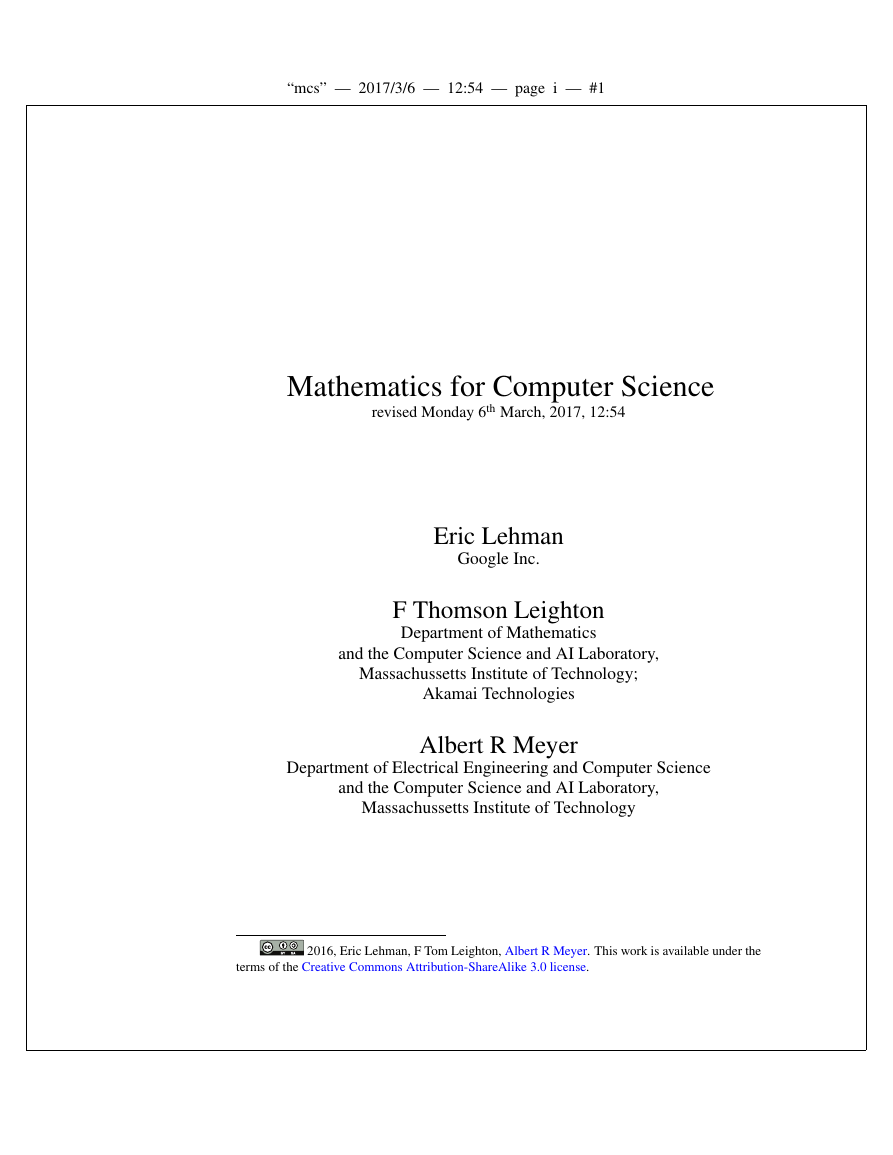
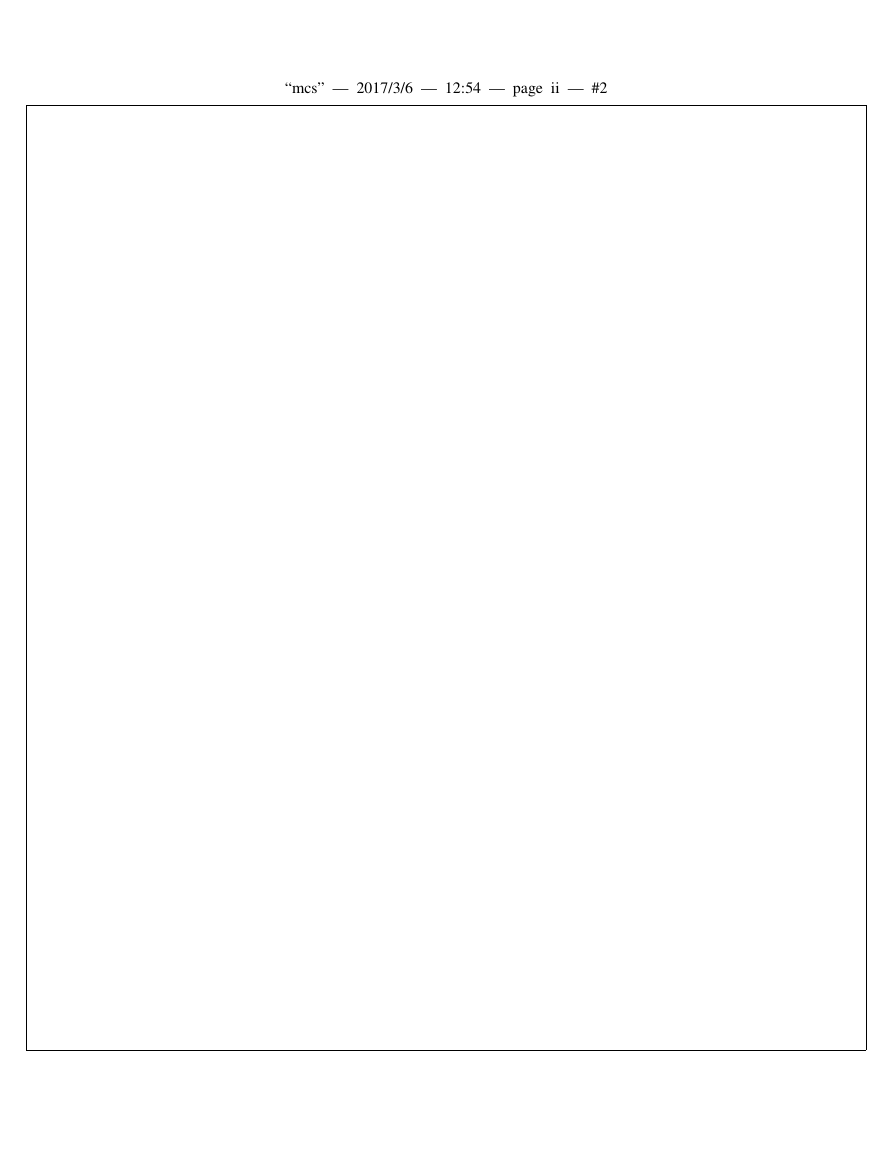
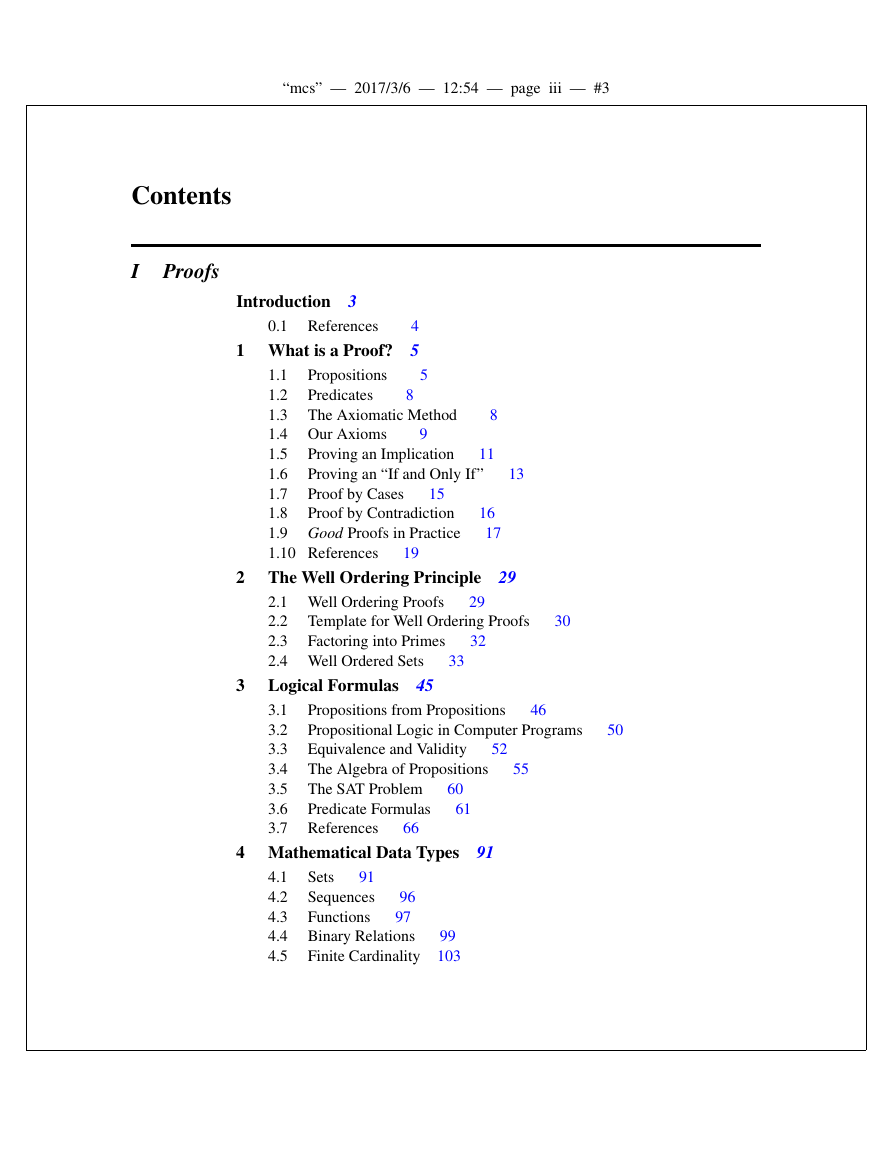
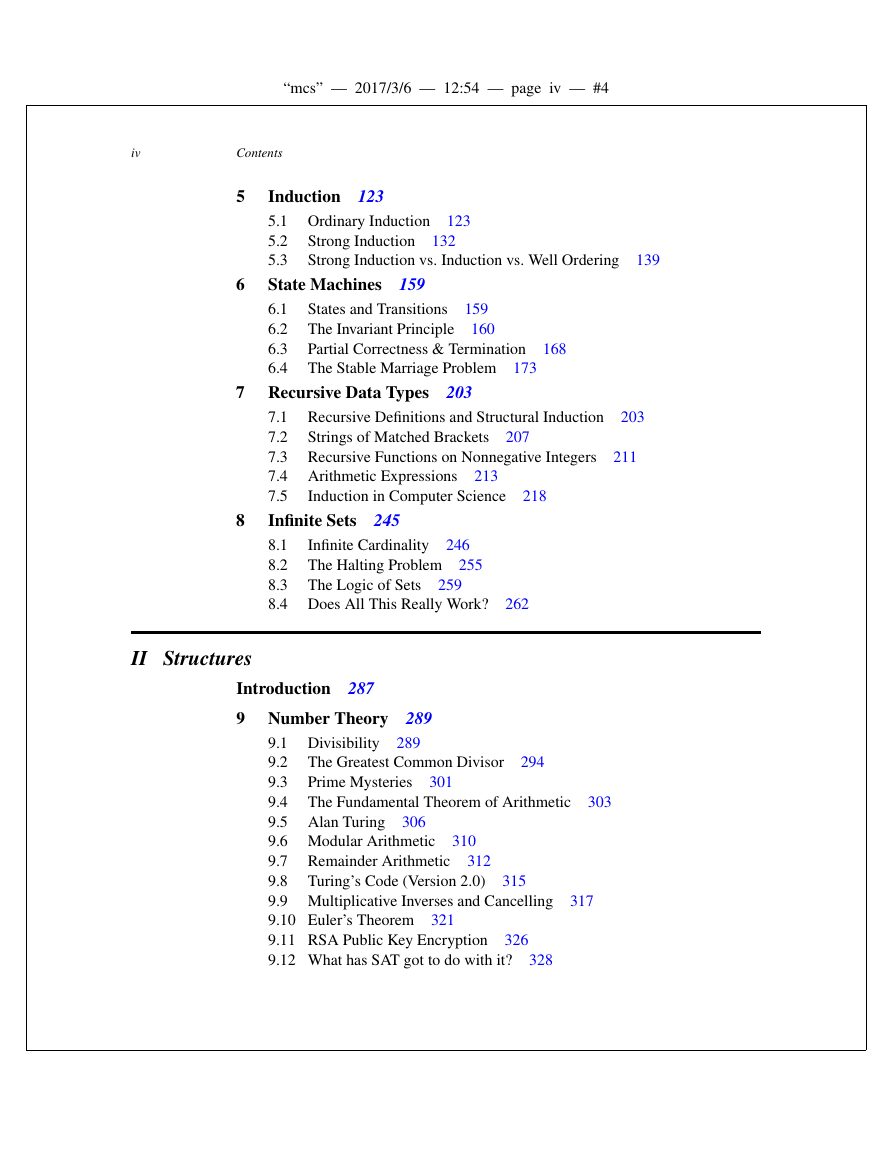
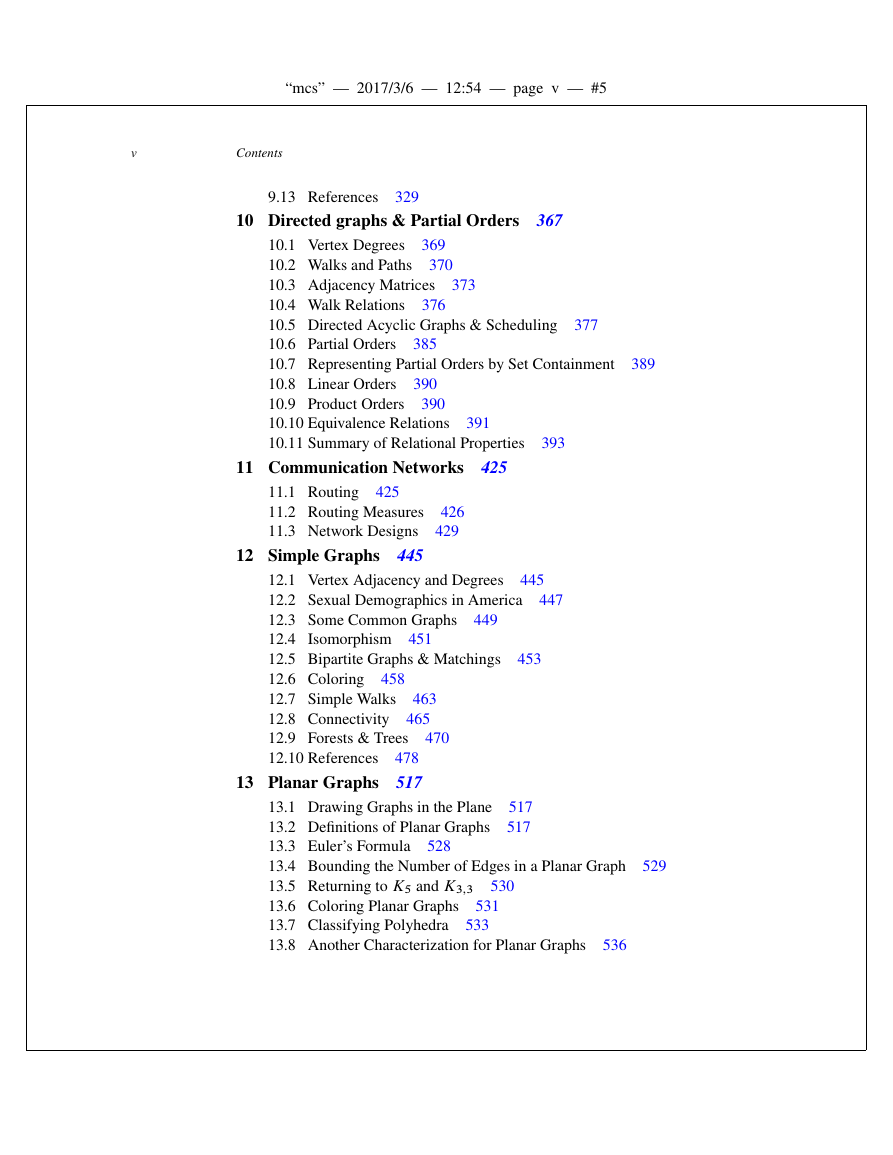
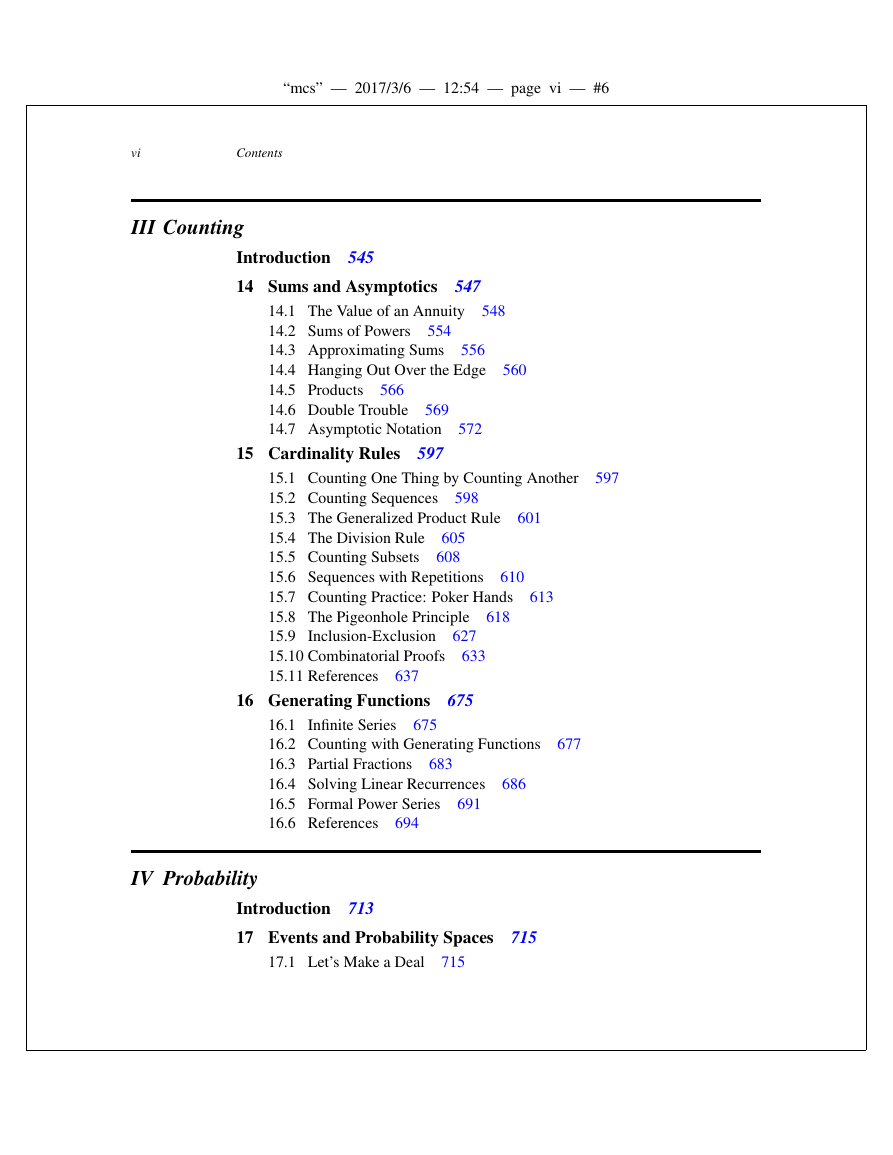
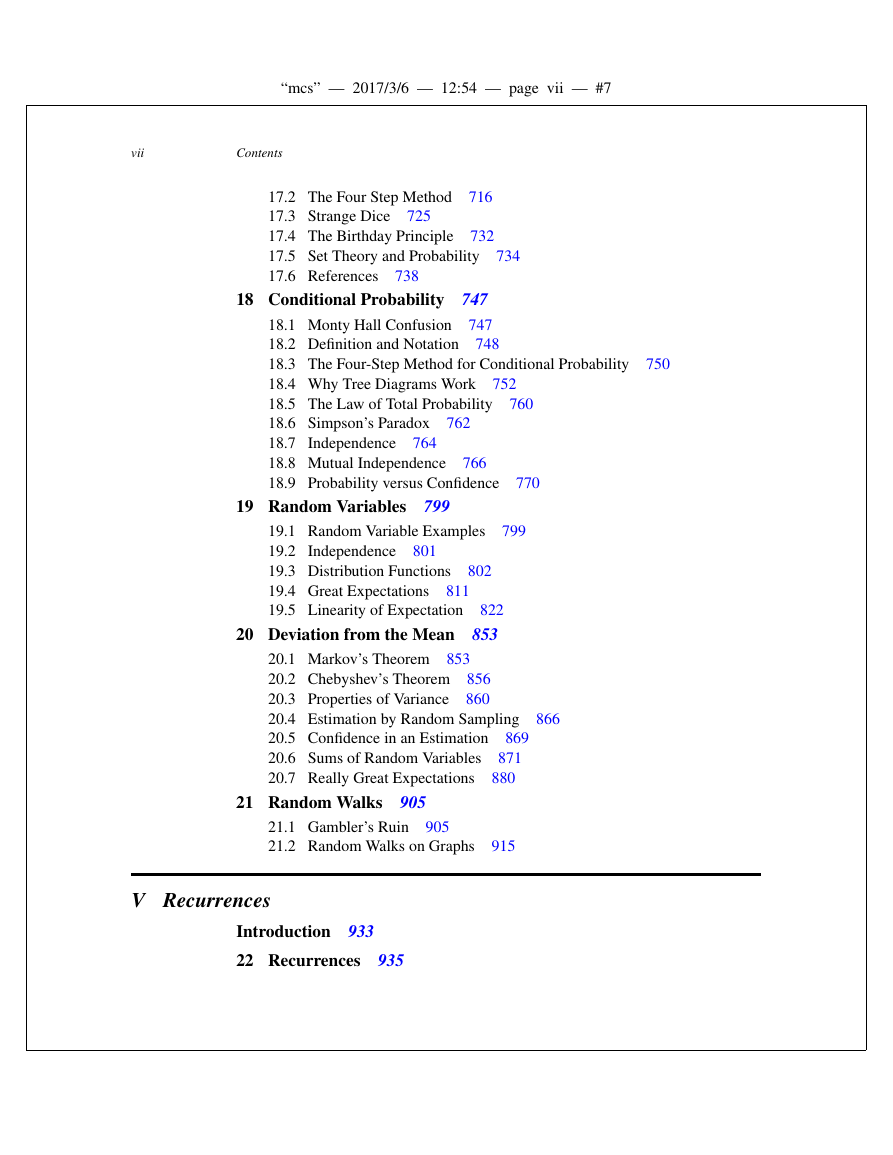
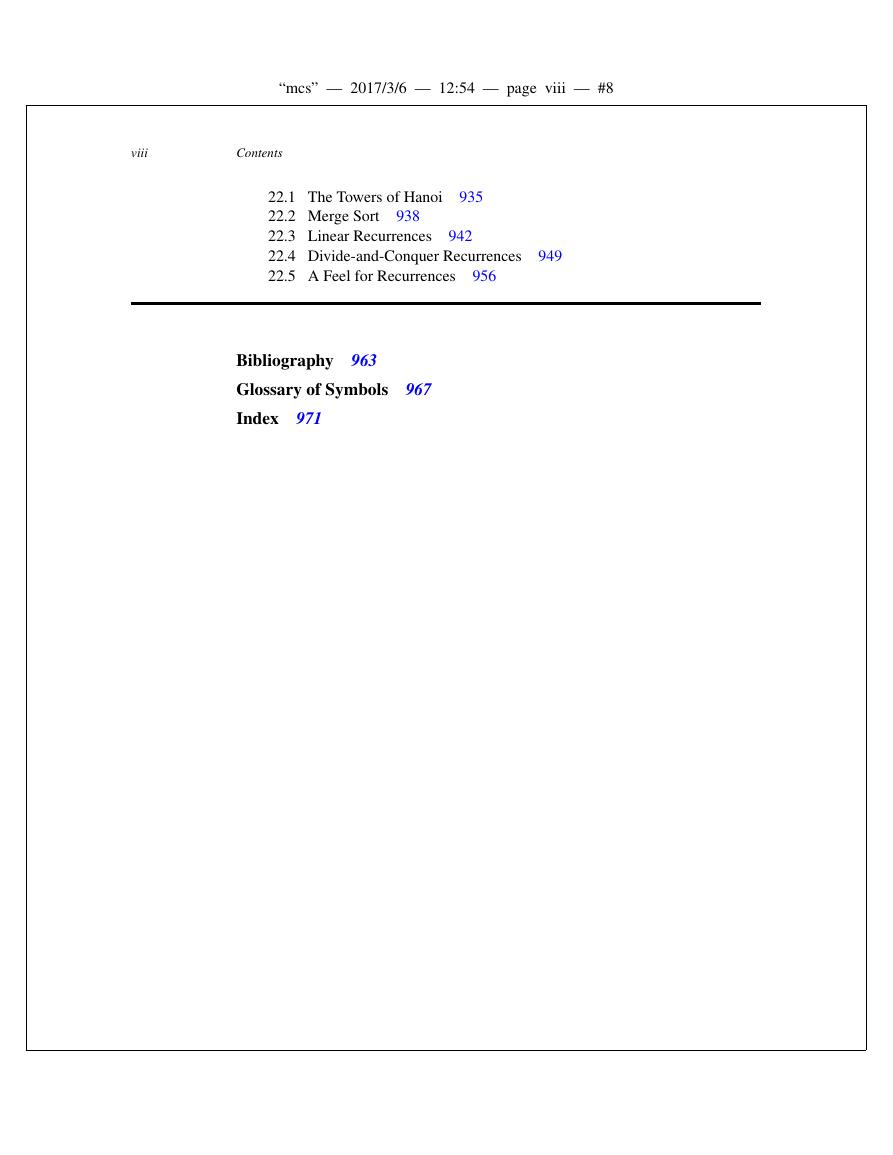








 2023年江西萍乡中考道德与法治真题及答案.doc
2023年江西萍乡中考道德与法治真题及答案.doc 2012年重庆南川中考生物真题及答案.doc
2012年重庆南川中考生物真题及答案.doc 2013年江西师范大学地理学综合及文艺理论基础考研真题.doc
2013年江西师范大学地理学综合及文艺理论基础考研真题.doc 2020年四川甘孜小升初语文真题及答案I卷.doc
2020年四川甘孜小升初语文真题及答案I卷.doc 2020年注册岩土工程师专业基础考试真题及答案.doc
2020年注册岩土工程师专业基础考试真题及答案.doc 2023-2024学年福建省厦门市九年级上学期数学月考试题及答案.doc
2023-2024学年福建省厦门市九年级上学期数学月考试题及答案.doc 2021-2022学年辽宁省沈阳市大东区九年级上学期语文期末试题及答案.doc
2021-2022学年辽宁省沈阳市大东区九年级上学期语文期末试题及答案.doc 2022-2023学年北京东城区初三第一学期物理期末试卷及答案.doc
2022-2023学年北京东城区初三第一学期物理期末试卷及答案.doc 2018上半年江西教师资格初中地理学科知识与教学能力真题及答案.doc
2018上半年江西教师资格初中地理学科知识与教学能力真题及答案.doc 2012年河北国家公务员申论考试真题及答案-省级.doc
2012年河北国家公务员申论考试真题及答案-省级.doc 2020-2021学年江苏省扬州市江都区邵樊片九年级上学期数学第一次质量检测试题及答案.doc
2020-2021学年江苏省扬州市江都区邵樊片九年级上学期数学第一次质量检测试题及答案.doc 2022下半年黑龙江教师资格证中学综合素质真题及答案.doc
2022下半年黑龙江教师资格证中学综合素质真题及答案.doc